Ferdinand BARBEDIENNE and Louis-Constant SÉVIN, orientalist garniture, circa 1860, gilt bronze and cloisonné enamel garniture of orientalist inspiration, rectangular-shaped case clock with four lions’ paws, and four Assyrian-type men’s masks on the corners, and surmounted by a large offerings’ cup with side handles. The two candelabra on the sides with similar Assyrian-type men’s masks, shields and other Assyrian- or ancient Greek-inspired decorations, three branches for the candles. Numerous cloisonné enamel decorations on large surfaces, with several signatures of F. BARBEDIENNE on the top of the clock, the dial and both candelabra.
The dial also in cloisonné enamel, with the Roman hour numerals as separate medallions, spade gilt hands.
French Paris movement, made and signed Ch. Boye, with pendulum and movement bearing the same 3311 serial movement, half-rollers Brocot escapement with steel suspension, hours and half-hours rack strike on a silvered bell.
H: 12½ʺ (32cm); W: 12¼ʺ (31cm); D: 6½ʺ (17cm)
Height of the candelabra: 18¼ʺ (46cm)
Louis-Constant Sévin was a French ornementalist sculptor and was the closest associate of the bronzier Ferdinand Barbedienne from 1855 until 1888. He played an important role in bringing together Art and Industry in the 19th Century Decorative Arts. He was extremely prolific and literally produced hundreds of models, a large number of them of orientalist inspiration.
His close association with Ferdinand Barbedienne was within his ideas of creating beauty in an industrial environment, “Beauty within Usefulness”.
With the help of the chafer Désiré Attarge (1820-1878), Louis-Constant Sévin universally established the reputation of the Barbedienne workshops in the creation of bronzes in the decorative arts, and was widely acclaimed at several universal exhibitions between 1855 and 1889.
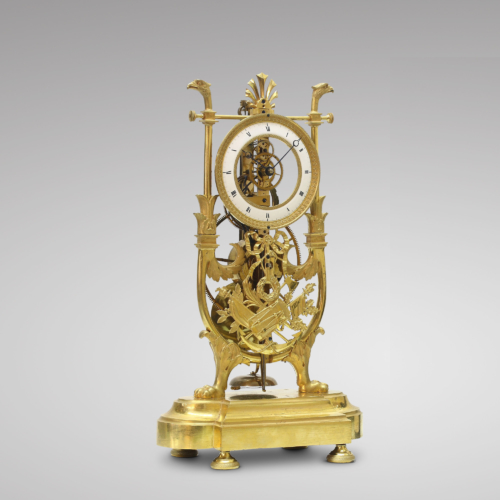
Early 19th C Skeleton Clock with Great Wheel, circa 1815. Single-winding movement of an entirely original design, [...]

[BOUBON, Palais Royal, Empire-period ormolu mantel clock, "Love conquers Time"]
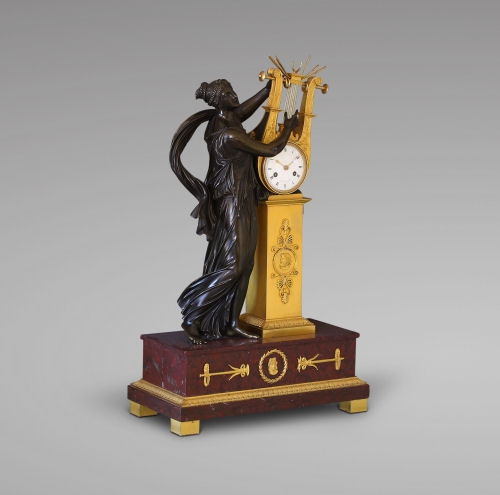
Erato, a French Empire-period mantel clock, from a model by Pierre-Philippe Thomire, circa 1805. [,,,]
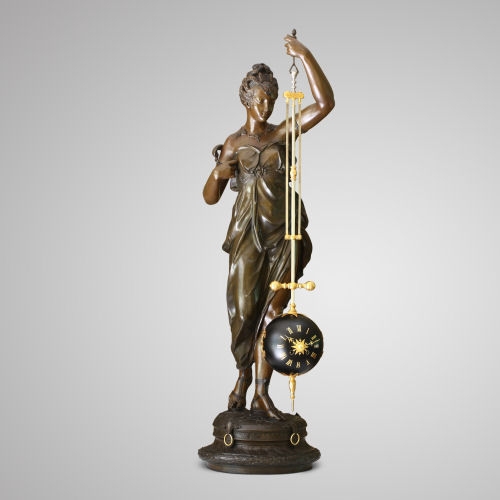
Important mystery clock of large-scale with torsion pendulum, signed J. Pratt, Comptoir General, Paris. Circa [...]
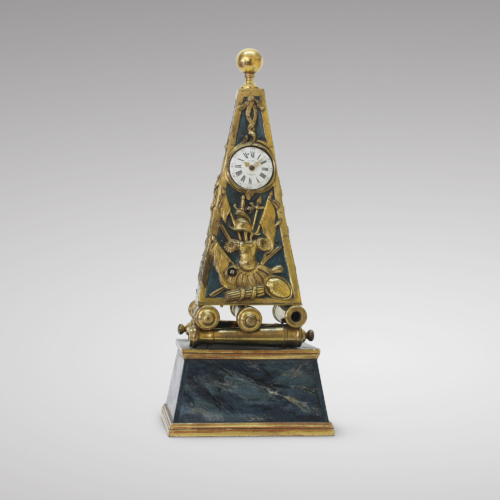
Thiout a Paris, Early Obelisk Clock with Military Attributes
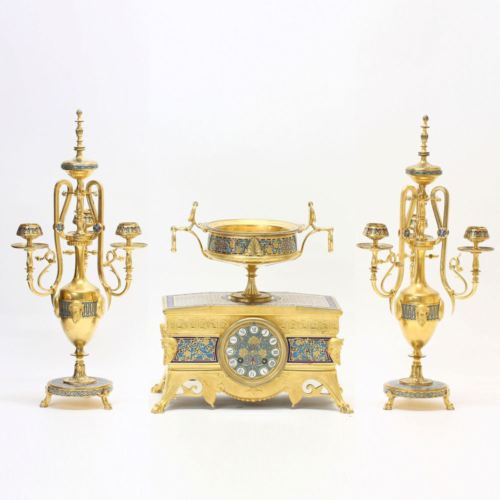
Ferdinand BARBEDIENNE and Louis-Constant SÉVIN, orientalist garniture [...]
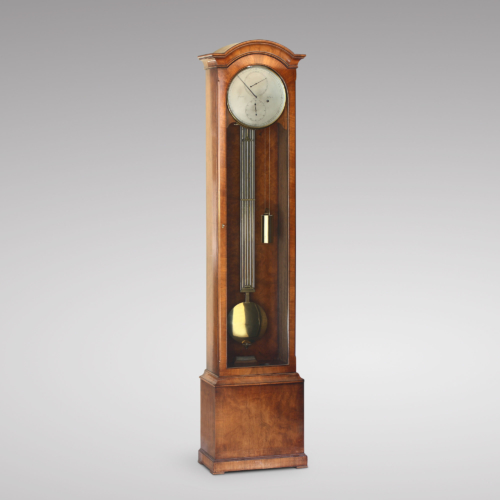
French Restoration-period (circa 1830) small floor-standing regulator signed “Jacob à Paris N°140” on the dial, on [...]
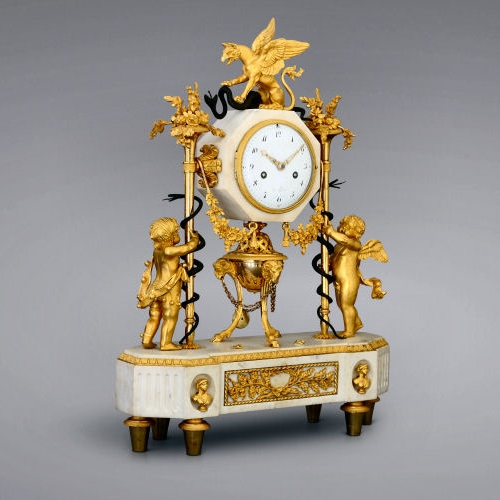
French Louis XVI (circa 1785) ormolu, patinated bronze and white marble clock [...]
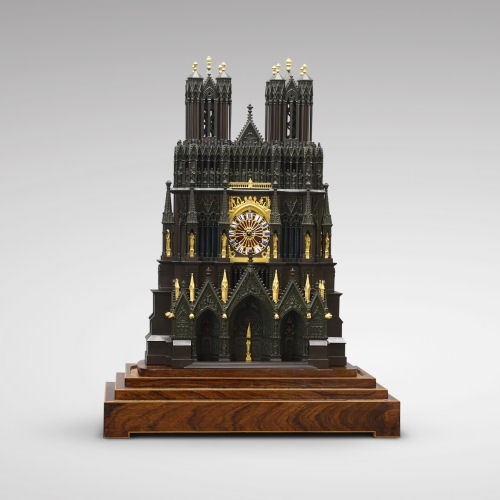
French “Cathedral” Clock, second Quarter Of The 19th Century, circa 1830, the case in patinated bronze of two [...]
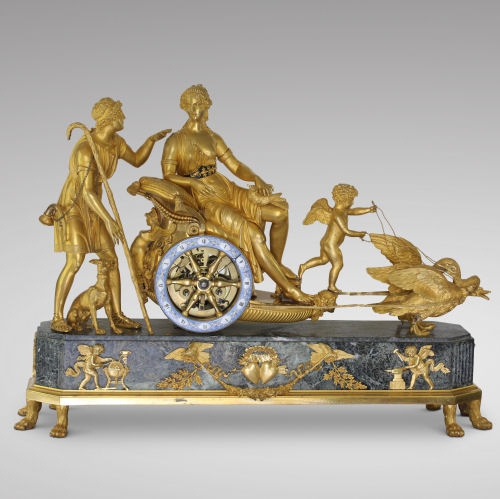
The Chariot of Venus, signed Leroy, bronzework by Ravrio [...]
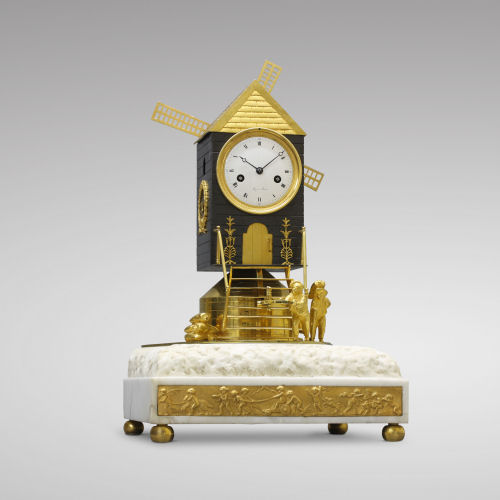
A separate movement of original concept with two great wheels makes the mill come to life,[...]

Neo-classical French Louis XVI ormolu and bronze sculptural mantel clock, signed Vincent, circa 1775 [...]
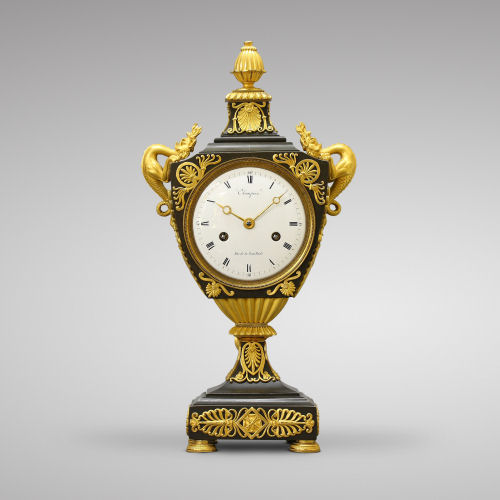
French Empire-period Urn clock, signed Champion rue de la Feuillade, Early 19th Century. Gilt and patinated bronze [...]

French “Noble Savage” Clock, "the Coffee Delivery Boy", Empire period, circa 1805.
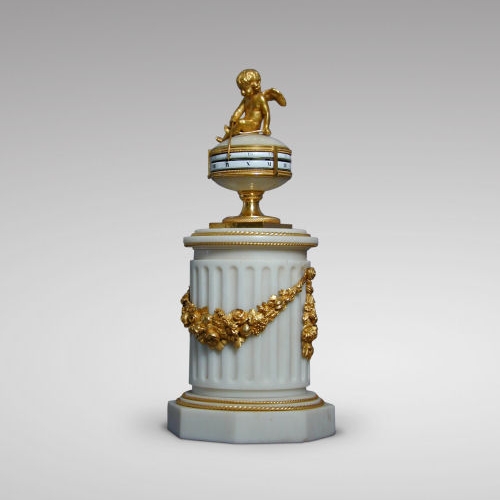
Rare French Louis XVI ormolu mounted Cercles Tournants mantel clock, circa 1780.
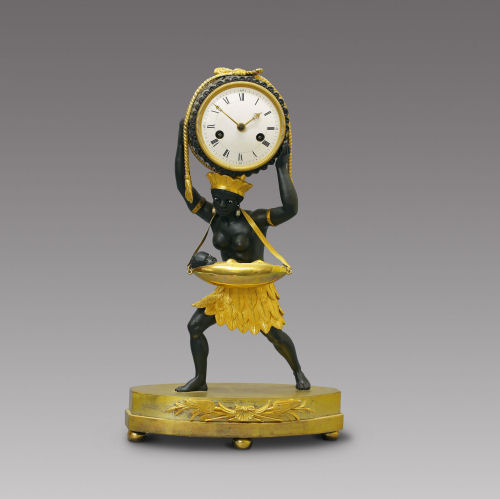
French "Noble Savage" clock representing an African nursemaid and her child. Empire period, circa 1800-1810.
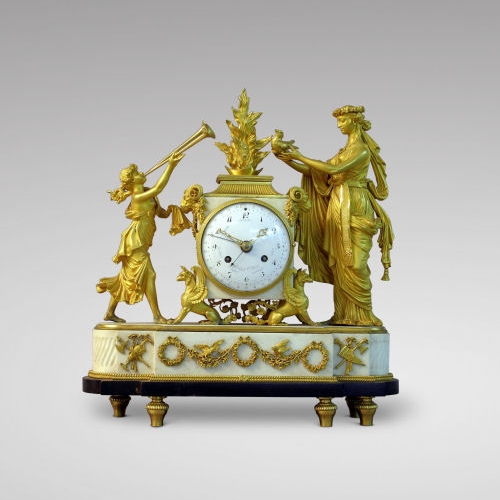
French late 18th C. marble and ormolu full calendar clock "The Vestals"
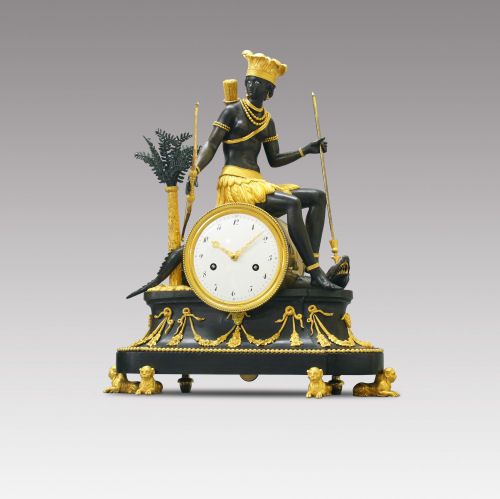
French “Noble Savage” Clock, very rare version of « L’Amérique », Consulate period, circa 1800.
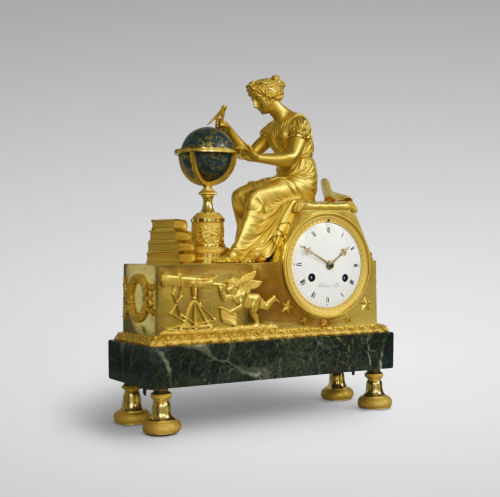
French Directoire-period ormolu and green vert-de-mer marble clock depicting a young woman studying astronomy. [...]